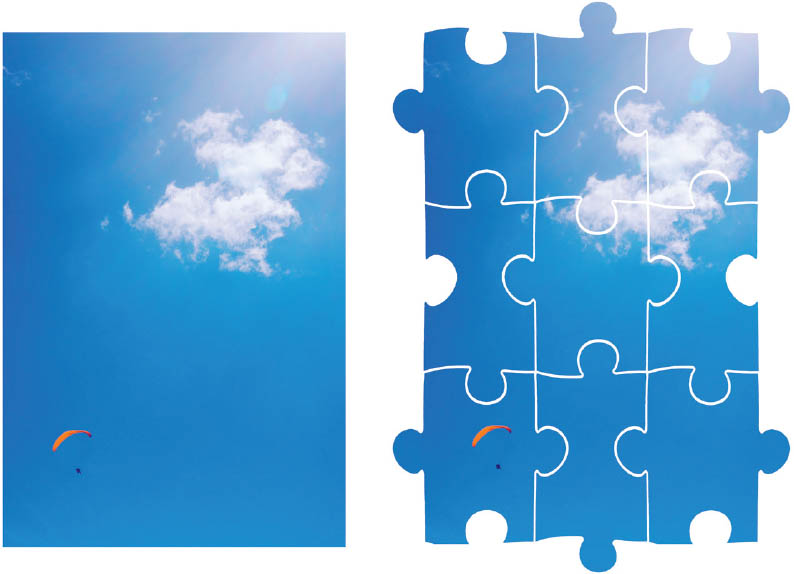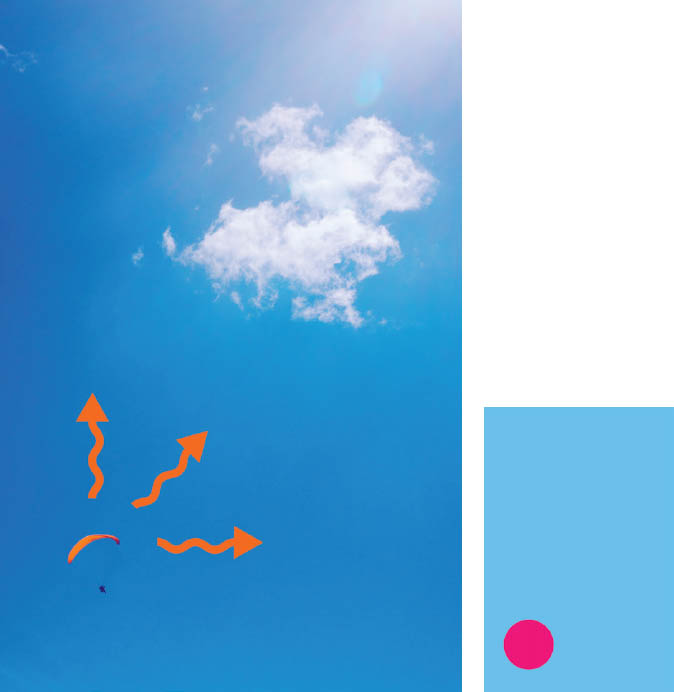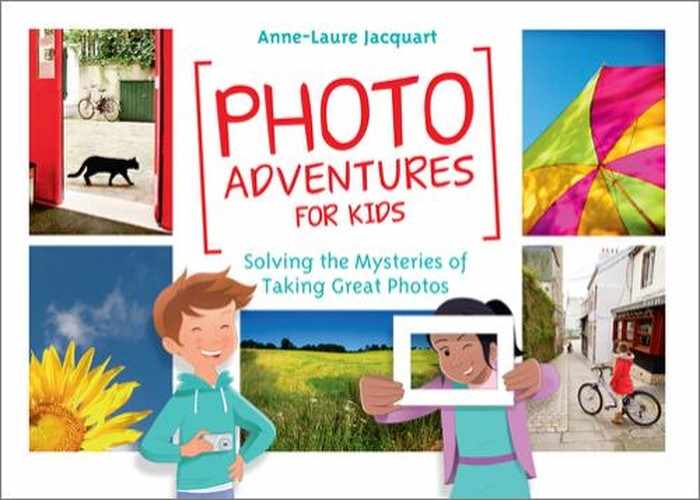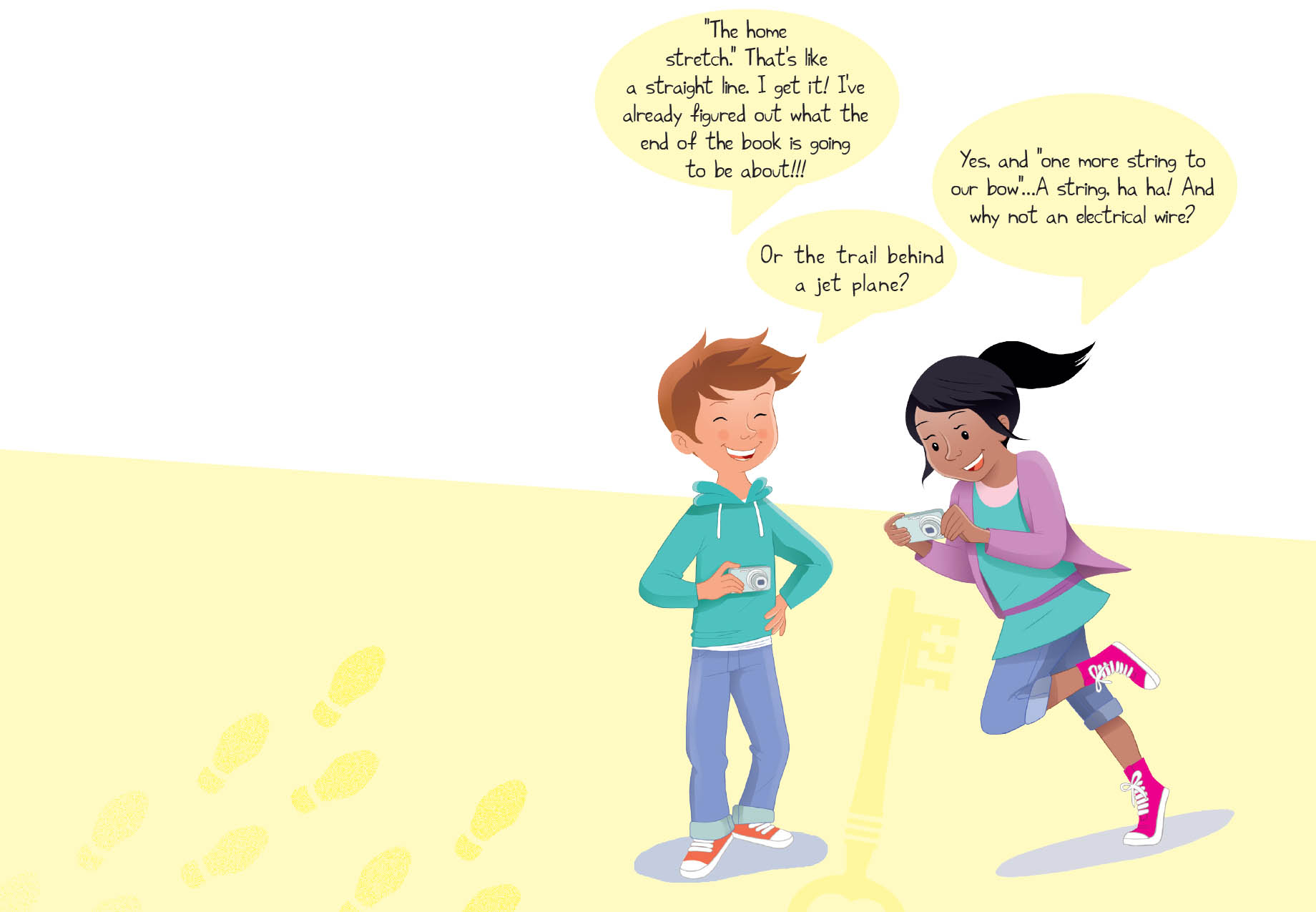The subject in the corner
![]()
Let’s investigate. The paraglider’s last flight
![]() One last time, let’s ask ourselves the same questions about the pieces of paragliding evidence.
One last time, let’s ask ourselves the same questions about the pieces of paragliding evidence.
- 1. Where is the subject? What could we call this kind of composition?
- 2. Do you have the feeling that:
- – the paraglider is more or less immobile in the sky?
- – the paraglider is moving? If it seems to be moving, which direction would you say it’s going? To the left, to the right? Up, down?


![]()
Deductions. Triple space
When you position the subject in the corner of the picture, it’s a little bit like moving it toward two edges at the same time. This time, for example, the paraglider is shifted to the left but also toward the bottom of the picture!
1. The subject is at the bottom left of the picture, in the corner. You could call this a “corner composition” or a composition “shifted to the bottom left.”
2. The paraglider does not look immobile at all; it looks like it wants to move upward diagonally to go connect with the cloud!
This composition gives the paraglider room in front of it (to its right) and also above it. This gives it even more possibilities to “move around” in the picture! We can imagine it moving to the right, going up even higher in the sky, or even moving across the frame diagonally.


Strategy. The subject in the corner
Think about positioning your starring subject in the corner of the picture—that’s often the best composition! This way the subject has lots of possibilities for moving within the frame, which makes the picture less boring and therefore more lively.
Most of the time, subjects are looking to the right or to the left, so you don’t have a choice about which side to put them on. But in deciding whether to put them at the top or the bottom, you are generally free to put them either place.

![]() The subject is in a different corner in each of these photos. Which of these subjects is not looking in a specific direction, allowing me to position it in any corner I liked?
The subject is in a different corner in each of these photos. Which of these subjects is not looking in a specific direction, allowing me to position it in any corner I liked?
The mushroom does not seem to be pointed in any particular direction; it’s not looking off to the side like the yellow flowers on page 106. I could have put it in a different corner of the picture and my composition would have turned out just as nice!
Considering the evidence. Varied compositions
![]() Let’s take a look at these pieces of evidence!
Let’s take a look at these pieces of evidence!

- 1. Where is the starring subject of each of these pictures?
- 2. Of the photos with the subject in the corner, which are successful pictures? Note: if there is a problem with the composition, then the picture is not successful.
1. A: the ladybug at the top left; B: the window at the bottom; C: the balloon, more or less in the middle, a little bit toward the top; D: the algae shaped like a miniature tree at the top right; E: the dog at the bottom right.
2. Pictures A and D are corner pictures that are well composed. Picture E is not well composed because the subject is too close to the edge; the dog’s tail and one of its legs are touching the frame.

![]()
Now you frame it. Let’s go back again
- 1. Place your frame on the view of the beach on page 107 and create two different compositions, each with the red sand sail under the gray sky positioned in a corner. (You could even find three different compositions!)
- 2. Use your frame to take a picture of the pony on page 103 that corresponds to this coded document:

![]()
Deductions. Photo compositions
These are the compositions that are possible showing the sand sail in a corner under the gray sky:
- a horizontal composition with the subject at the lower right;
- a vertical composition with the subject at the lower left;
- and a vertical composition with the subject at the lower right!
![]() Given the fact that the sand sail is moving to the right, and we want to compose in the direction of the gaze, which is the best composition?
Given the fact that the sand sail is moving to the right, and we want to compose in the direction of the gaze, which is the best composition?
Only the middle picture, with the sand sail at the left, is composed in the direction of the gaze!
Here is our new composition with the pony.


![]()
Picture quest. Decentered compositions shifted toward a corner of the frame
![]() Now you get to play around with decentered compositions! Here are your marching orders.
Now you get to play around with decentered compositions! Here are your marching orders.
- 1. Find a subject that is pretty small or far away from you: an eraser, a piece of candy, a little stone, a flower all by itself, a house or a tree far away . . .
- 2. Make your subject move around in the picture by having it go from one corner of the frame to another. Move your camera around to make this happen, of course!
- 3. Figure out which corner your subject would look best in, depending on what you want to show around it, and whether it’s better to give it room above, below, to the right, or to the left.

![]()
Let’s investigate. Adding compositions to each other!
![]() Let’s talk in code again: it’s more discreet that way!
Let’s talk in code again: it’s more discreet that way!
- 1. What can you say about the composition of this picture?
- 2. What do the encrypted documents below it mean?

1. The starring subject, the helicopter, is positioned in the corner of the picture. Another subject, the cloud, is corner-cropped.
2. The coded documents mean that this picture is made up of two compositions added together.

Strategy. Multicompositions
When you take a picture of several interesting subjects at the same time, try to make sure that each subject has the benefit of good and thoughtful composition.
For example, position them in different corners of the frame (using corner framing or shifting toward a corner)!


Considering the evidence. Flashback evidence
I went back to the earlier chapters and found new pieces of evidence for “additive compositions!”
![]() Look carefully at these three coded messages and find their corresponding pictures in order to refine your strategy!
Look carefully at these three coded messages and find their corresponding pictures in order to refine your strategy!
Note that sometimes you will have to create the picture using your cardstock frame. Good luck!

Message 1: This is the second picture on page 63.
Message 2: To get this, you have to position your cardstock frame on the aquarium on page 17 and take a picture with a fish in each of two corners: the striped fish in the upper right and the fish with the orange tail in the lower left.
Message 3: This is photo B on page 15.
Are you ready for the home stretch?! Heh heh heh!!!
Our strategic photo-composition plan is, indeed, almost finished.
Cropping a large subject with the frame, positioning a small object within the picture: we are almost up to speed with that.
Now all we need to do is add “one more string to our bow!”


